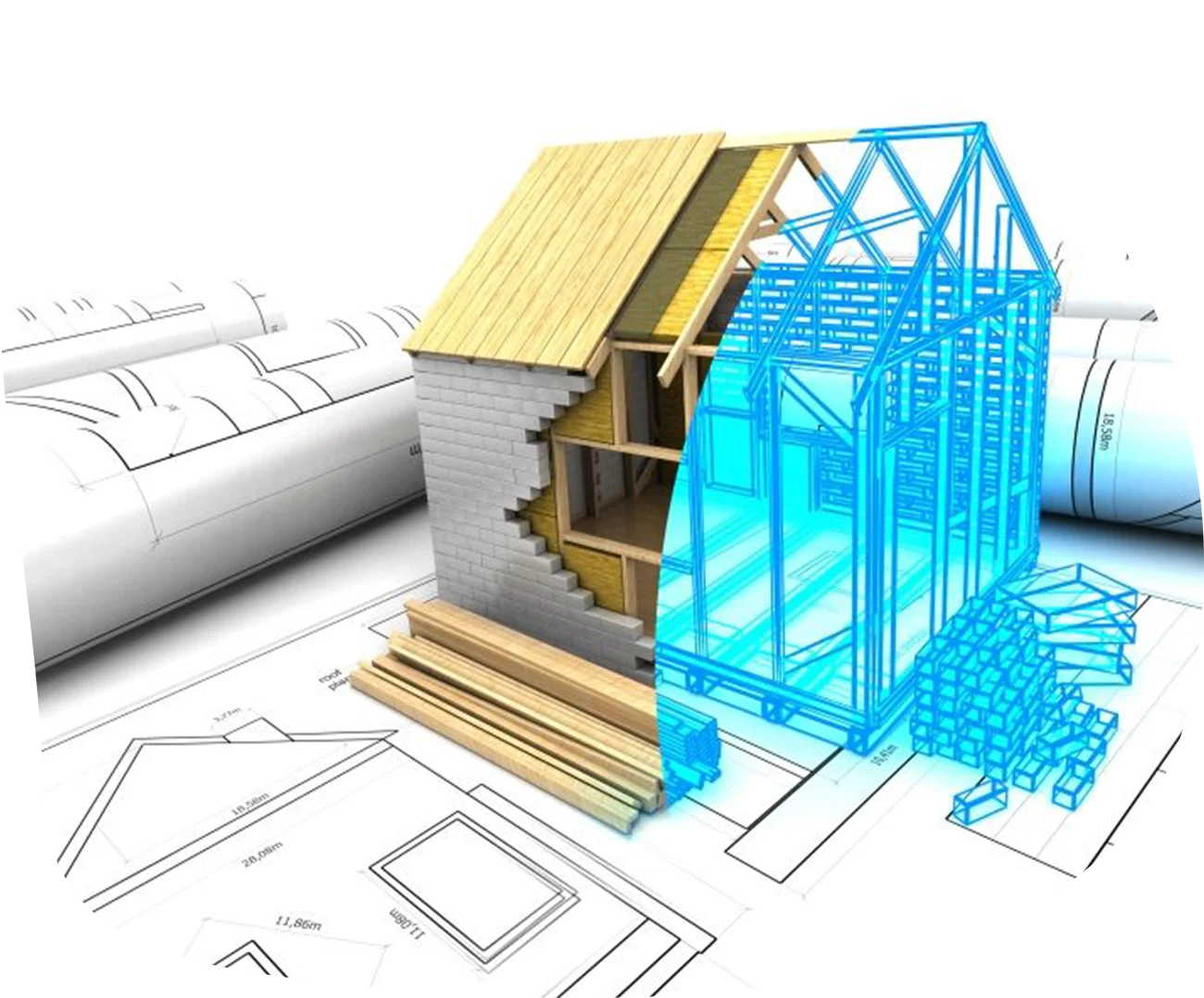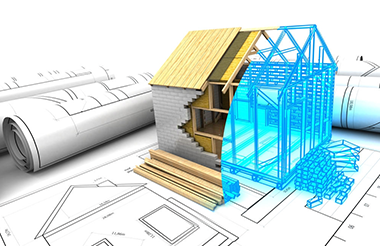Self-Build Mortgages
Building your own home is becoming increasingly popular, and there are specialist mortgages available to help purchase the land and fund the associated construction costs.


Self-Build Mortgages - Revolution Finance Brokers
Building your own home can feel like a dream out of reach, especially with the rising cost of houses today. One key solution to this problem is self-build mortgages, specially designed loans that release funds in stages as your build progresses.
We will guide you through everything from understanding what self-build mortgages are, how to get one, and the options available to make this dream achievable.
Finding a Self Build Mortgage UK
The difference between a self-build and a standard residential mortgage is that a self-build mortgage provides funding in stages at each stage of the build process.
Each lender has its own process, but typically an initial lump sum is released to purchase the land, and further instalments are released at crucial stages of the build.
For example, a proportion of the mortgage is released when each floor is completed. The following payments are released when key parts of the structure are finished, and the build is completed.
These instalments are referred to as tranches. Lenders either release each tranche after the next build stage has been finished or less commonly beforehand.
Usually, an independent surveyors report will be required to verify the build stage that has been achieved
Error: Yearly income income must be between £1 and £10,000,000.
Error: Regular bonus must be between £1 and £10,000,000.
Types of Self Build Mortgage
Some mortgages provide funds upfront to purchase initial materials or release down payments to contractors. It is vital to consider your cash flow requirements throughout the self-build project before deciding on the right mortgage lender for you. Self-build mortgages are available for any type of self-build, generally brick or timber frame buildings. If you are considering an innovative project or using unusual materials, you may require a niche lender.
How Do Self Build Mortgages Work?
Securing a self-build mortgage transitions smoothly into the stage where funds get released incrementally throughout your building project. This process aligns perfectly with the construction milestones, including purchasing land, laying foundations, topping off the roof, and perfecting the interior finishes.
Each of these steps marks a crucial point where finances are injected to keep the construction moving forward without hitches.
Two distinct models cater to builders' needs: arrears and advance self-build mortgages. Arrears-style mortgages mean you'll receive payments only after each phase's completion, ensuring work progresses as planned before any funds are disbursed.
Conversely, advance self-build mortgages provide funding at the onset of each stage, offering immediate capital to cover upcoming expenses. This structured financial support allows for efficient planning and execution of every build phase, directly impacting project success rates by aligning cash flow with construction needs.
Examples of the stages at which each tranche of funding is released could include:
- The purchase of the plot of land
- Initial completion of foundations
- Framework erected
- Property is made water and windproof
- The initial interior is completed
- Project is completed
A loan for a property you are building yourself
Getting a loan for an existing property you're building yourself, known as a self-build mortgage, is essential if your dream involves constructing your own home. Unlike conventional mortgages that cover the purchase of an existing house, self-build mortgages are designed specifically for those creating their residence from the ground up.
These special loans cater to the distinct needs of self-building by releasing funds in stages throughout the construction process. This approach ensures that money is available exactly when you need it for each phase of building, making managing finances and project timelines easier.
The beauty of opting for self-build mortgages lies not only in their flexibility but also in their financial benefits. For one, stamp duty is not charged on the cost associated with labor or materials but just on the land purchase if its value exceeds a certain threshold.
Moreover, homeowners often find that upon completion, their newly built property's market value significantly surpasses the sum total they spent on land acquisition and construction costs.
This potential increase in equity makes getting mortgages for self builders an attractive investment beyond merely fulfilling personal housing dreams.
Finding the Best Self Build Mortgages for a Land Purchase
Mortgages are available to purchase a plot of land and are usually dependant on the right planning permission being in place. A build mortgage lender can finance varying values of the land – typically between 50-75% of the value of the plot. If you have existing finances available to fund part of the project, it is usually most cost-effective to save these funds for the building project, since this helps to reduce the number of tranches required and expedite the mortgage process whilst minimising fees.
The Pros and Cons of a Self Build Mortgage UK
Advantages:
- Usually lower cost to build your property than to purchase a ready-made equivalent
- Lower stamp duty, since this is payable only against the land purchase
- No stamp duty is payable if the plot of land costs less than £125,000
Disadvantages:
- Mortgage fees and interest rates can be higher than standard residential mortgages
- A higher deposit is required, usually from 25% of the build project cost
- Detailed plans and planning permissions are required for mortgage lenders for self-build mortgages
- Additional accommodation costs during the building project
Self Build Mortgage Rates
Depending on the lender usually self-build mortgages carry higher interest rates than residential mortgages, so choosing the right scheme is essential. The ideal scheme will not carry penalties, and allow you to remortgage once the build is complete. Using a mortgage advisor, such as the team at Revolution Finance Brokers, has the advantage of providing access to the most competitive schemes on the market, as well as the negotiating power to achieve the most advantageous rates and terms.
Choosing a Self Build Mortgage
Self-build mortgages are a specialist product and should be selected from the smaller number of lenders who offer this type of mortgage. Here at Revolution Finance Brokers we have extensive experience in securing self-build mortgages, and would be delighted to help you get your project off the ground! If you aren't sure which lender to choose, don't know what sort of self-build mortgage is right for you, or need support in planning the budget for your dream home, give us a call today!
Self Build Mortgage Already Own Land
If you already own a parcel of land, you can usually still get a self-build mortgage. The main difference is that you won't need to apply for any borrowing to purchase the land itself and purely for the construction costs.
Lenders will usually want an updated valuation to know what the security is worth and check whether you have planning permission in place.
It's often challenging (if not impossible) to get past any stages of a mortgage application without the requisite permission. We'd also advise completing the planning approval process before the valuation - land with planning consent is often worth considerably more than a comparable asset with no permissions.
If you aren't sure which lender to choose, don't know what sort of self-build mortgage is right for you, or need support in planning the budget for your dream home, give us a call today.
How to Get a Self-Build Mortgage
Getting a self-build mortgage starts with finding the right self build mortgage lender who understands your project's unique needs. You'll need to meet their eligibility criteria, which often involves presenting detailed plans and a reliable monthly mortgage payments strategy.
Apply for a self-build mortgage
To start your journey with self-build mortgages, prepare to show detailed plans of your project. Lenders ask for a complete set of plans to understand what you're building. You also need to secure planning permission before applying, as this proves the local government approves of your construction.
Gather evidence such as site insurance and structural warranty documents; these are crucial for protecting your project against unforeseen issues. Don't forget to include information on your architect's professional indemnity cover, showing they're insured against potential mistakes or oversights in their work.
Creating an accurate projection of costs involved is another key step. This helps lenders assess how much money you'll need at each stage of the build and ensures they release funds accordingly.
Contacting a specialist mortgage broker could streamline this process since they have experience dealing with the additional paperwork required for a self-build mortgage application.
They can guide you through compiling all necessary documentation efficiently, getting you one step closer to making your dream home a reality.
Self-build mortgages are special loans that help people get the money they need to build their own homes instead of buying an already built house.
To qualify for a self-building mortgage, you usually need to show detailed building plans, a realistic budget, and sometimes proof that you have experience in building or managing construction projects.
Yes, you can use a self-build mortgage to fund the construction of various types of houses as long as your project meets the lender's requirements and guidelines.
Unlike regular home loans that provide funds after the purchase, self-build mortgages release money in stages as your home construction progresses, ensuring funds are available when needed for each phase of the build.
Further Reading
Explore Our Presence
Securing an excellent mortgage offer with Revolution Finance
Brokers couldn't be easier:
Revolution Mortgage Brokers:
100% Independent & Whole-of-Market
As specialist mortgage brokers for a huge variety of applicants, the whole-of-market consultants at Revolution provide access to an exceptional range of lenders, products and mortgage deals. That means you get the advantage of professional negotiation and broker-exclusives through an established lending network to ensure we always find you the most competitive mortgage available.
Ask the Expert
Mortgage Brokers





























